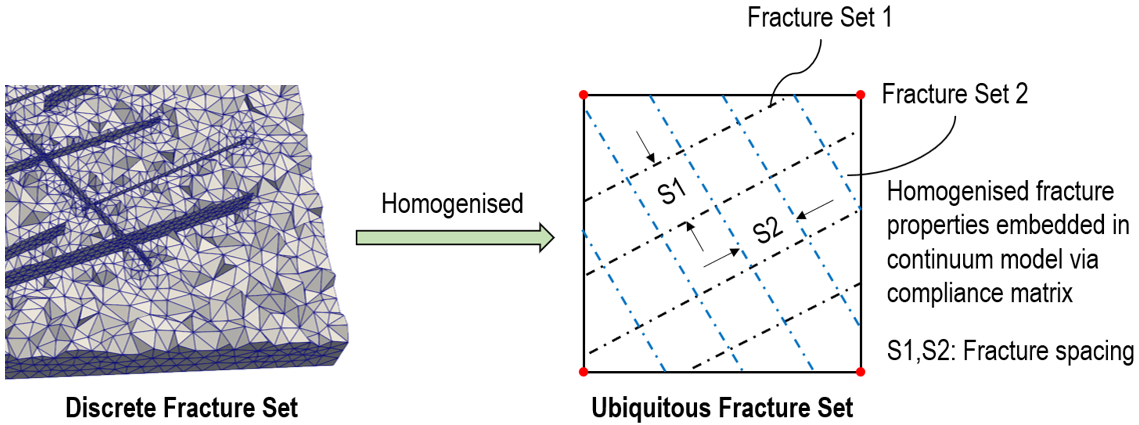Fract_003 Modelling of Embedded Continuum Fracture
Introduction
The aim of this tutorial example is to demonstrate the modelling of continuum fracture as an alternative to discrete fracture modelling. The modelling of realistic jointed rock can be computationally expensive due to the presence of fractures that normally require highly refined mesh. The mesh size can be prohibitively fine when compared with the scale of the whole model. In cases where macroscopic behaviour of the jointed rock is of primary interest, the adoption of embedded fracture approach would be beneficial.
There are two main approaches towards modelling of embedded fractures, i.e., ubiquitous and spatial. The former assumes homogenised properties (e.g., fracture stiffness, permeability, etc.) to be accounted for in the constitutive compliance matrix for all elements, whereas the latter only corresponds to elements which coincide spatially with the discrete counterpart. In the next tutorial section Fract_004, we demonstrate application of both ubiquitos and spatial approaches in the flow field. In the following cases, we focus only on the Ubiquitous Embedded Fracture (UEF) approach in the mechanical field.
Simulation Cases
Case01 Joint Normal Displacement with Bandis Model
Case02 Joint Normal Displacement with Bandis Model (Spacing 0.25m)
Case03 Joint Normal Displacement with Cyclic Loading
|

